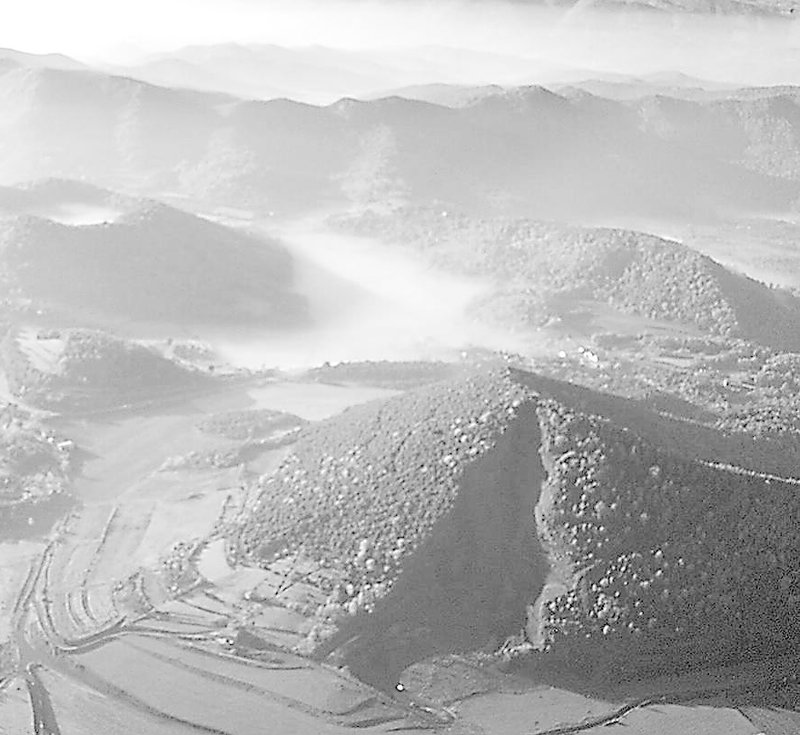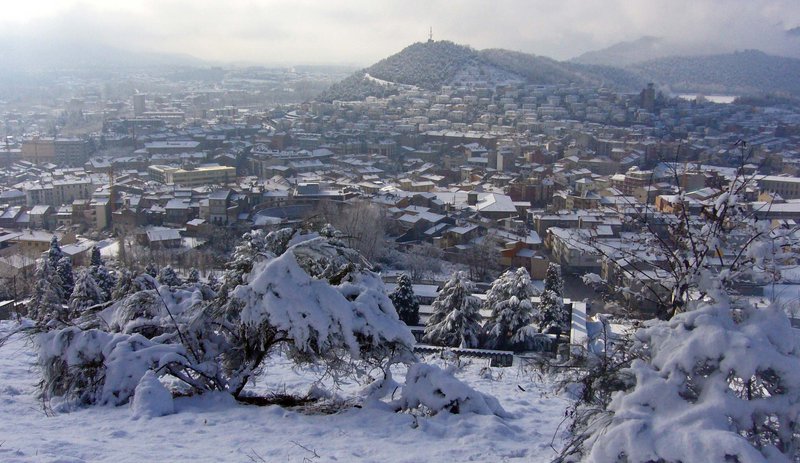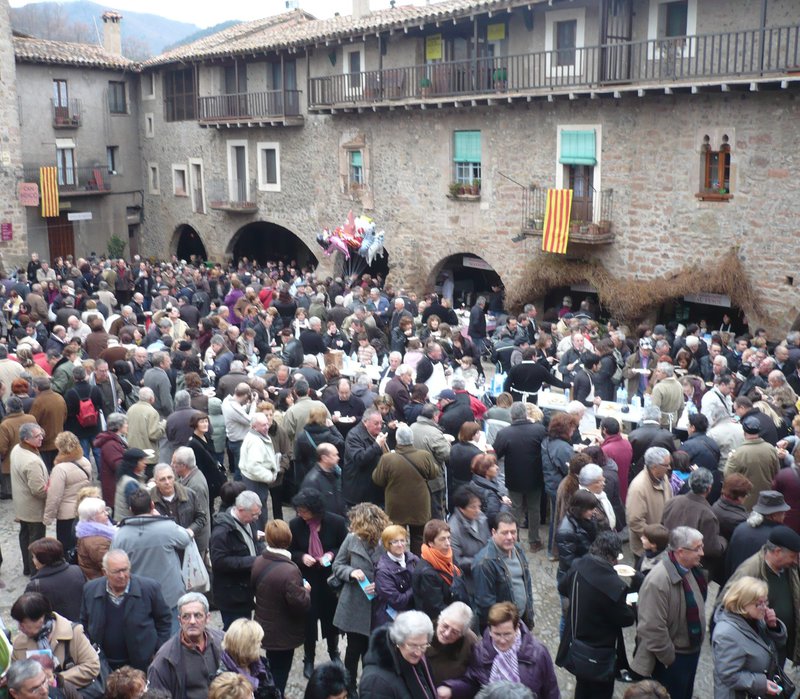A land of volcanoes and woods out of a fairy tale
A round trip through the picturesque surroundings of La Garrotxa which boasts four well-preserved volcanoes and the magical beech woods of Fageda d'en Jordà
1
Olot, the “city of volcanoes”, is well known for its natural attractions and for being part of Garrotxa's Zona Volcànica. There are four volcanoes in the municipal area: Montsacopa, Montolivet –both of which can be visited– Garrinada and Bisaroques. The surroundings of Olot also offer a rich natural environment, especially the marshy woodlands of La Moixina and the Croscat volcano. The botanical garden of Parc Nou is remarkable and well worth a visit. It is a also the centre of the Museu dels Volcans, where excursionists will find all the information they might want about this unique area.
2
Leaving behind the capital of La Garrotxa, visitors can head up to the Fageda d'en Jordà, a point where the second part of the route begins. The road is easy to follow, making it suitable for all the family. The whole area is comprehensively signposted and very educational for children– it crosses two volcanoes and the area of the Graderes of the Croscat is open for visits, with a lot of information available on volcanoes.
Take the Olot-Santa Pau road. A few kilometres before arriving at Santa Pau there is a car park on the left side of the road: it's the Can Serra area (Fageda d'en Jordà). This is the first starting point. The road follows the itinerary 1, so you'll only have to follow the signposts (marked in red). Past the area of Santa Margarida, take the itinerary 15 (green) in order to get to the Graderes of the Croscat volcano and then take itinerary 1 again to return to the starting point.
It is a circular route of less than four hours, taking you from the beauty of the Fageda beech woods and the volcano of Santa Margarida to the spectacular site of the Croscat volcano. Croscat is a realtively young volcano that erupted for the last time more than 10,000 years ago and that has the highest cone on the Iberian Peninsula, at some 160 metres high.
3
The route continues to the village of Santa Pau, whose medieval sites are a must for visitors, especially the plaça de l'Alqueria, the castle and the church of Santa Maria.
Some 81% of its territory is part of the natural park of the Zona Volcànica de la Garrotxa. The village offers visitors activities related to adventure sports, hiking and horse riding routes. In terms of gastronomy its most popular and appreciated product is fesols de Santa Pau, made with a special kind of bean that is also the protagonist of an annual fair where visitors can taste dishes cooked in a variety of ways.
The route
The route through La Garrotxa's famous volcanic area is an itinerary divided into three parts.The route starts in the local capital of Olot, where visitors can see two volcanoes as well as a museum dedicated to the volcanic phenomena and the various natural natural environments to be found in La Garrotxa. The route continues along the Santa Pau road, up to the fairy-tale style beech wood of the Fageda d'en Jordà. Here there are two more volcanoes before the route ends in the village of Santa Pau, a perfect place to enjoy medieval heritage and its beautiful natural landscape.






